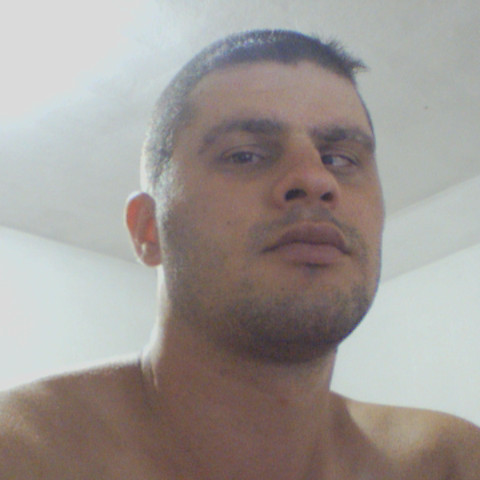Stefan Alexandru Carp
age ~48
from Winchester, MA
- Also known as:
-
- Stefan A Carp
- Stefan Alexandru
- Phone and address:
- 14 Park Ave #2, Winchester, MA 01890
Stefan Carp Phones & Addresses
- 14 Park Ave #2, Winchester, MA 01890
- Roxbury, MA
- Revere, MA
- 15 Joseph St #2, Somerville, MA 02143
- Cambridge, MA
- Irvine, CA
- 7 Sherman Pl, Winchester, MA 01890
Education
-
Degree:Associate degree or higher
Resumes

Assistant Professor Of Radiology
view sourceLocation:
Boston, MA
Industry:
Research
Work:
Harvard Medical School
Assistant Professor of Radiology
Harvard Medical School Nov 2010 - Jun 2014
Instructor In Radiology
Massachusetts General Hospital 2005 - 2010
Research Fellow
Assistant Professor of Radiology
Harvard Medical School Nov 2010 - Jun 2014
Instructor In Radiology
Massachusetts General Hospital 2005 - 2010
Research Fellow
Education:
Uc Irvine 2000 - 2005
Doctorates, Doctor of Philosophy Massachusetts Institute of Technology 1996 - 2000
Bachelors, Bachelor of Science, Chemical Engineering, Chemistry
Doctorates, Doctor of Philosophy Massachusetts Institute of Technology 1996 - 2000
Bachelors, Bachelor of Science, Chemical Engineering, Chemistry
Skills:
Optics
Medical Imaging
Scientific Programming
Biomedical Engineering
Neuroimaging
Instrumentation Development
Breast Cancer Research
Signal Processing
Grant Writing
Spectroscopy
Matlab
Project Management
Clinical Research
Medical Devices
Image Analysis
Image Processing
Science
Physics
Life Sciences
Medical Imaging
Scientific Programming
Biomedical Engineering
Neuroimaging
Instrumentation Development
Breast Cancer Research
Signal Processing
Grant Writing
Spectroscopy
Matlab
Project Management
Clinical Research
Medical Devices
Image Analysis
Image Processing
Science
Physics
Life Sciences

Stefan Carp
view sourceIndustry:
Biotechnology
Us Patents
-
Cancer Detection By Optical Measurement Of Compression-Induced Transients
view source -
US Patent:20080004531, Jan 3, 2008
-
Filed:Jun 21, 2007
-
Appl. No.:11/766444
-
Inventors:Stefan Carp - Cambridge MA, US
David Boas - Winchester MA, US -
Assignee:Massachusetts General Hospital - Boston MA
-
International Classification:A61B 6/00
-
US Classification:600473000
-
Abstract:A cancer screening method includes changing a compression state of selected tissue; and obtaining a signal indicative of a response of an optical property of the selected tissue in response to the change in the compression state.
-
Systems And Methods For Characterizing Biological Material Using Near-Infrared Spectroscopy
view source -
US Patent:20210123860, Apr 29, 2021
-
Filed:Nov 5, 2020
-
Appl. No.:17/090465
-
Inventors:- Boston MA, US
Stefan A. Carp - Charlestown MA, US
Dieter Manstein - Charlestown MA, US -
International Classification:G01N 21/359
G01N 21/47 -
Abstract:The present disclosure provides systems and methods for characterizing and monitoring biological material. In one aspect, a method for characterizing biological material includes acquiring optical data associated with a biological material, and analyzing the optical data to determine optical properties of the biological tissue. The method also includes determining, using the optical properties, phase information corresponding to the biological material, and generating a report characterizing the biological tissue using at least the phase information.
-
System And Method For An Optical Blood Flow Measurement
view source -
US Patent:20200375476, Dec 3, 2020
-
Filed:Feb 18, 2019
-
Appl. No.:16/970670
-
Inventors:- BOSTON MA, US
Stefan Carp - Boston MA, US
Davide Tamborini - Charlestown MA, US
David Boas - Charlestown MA, US
Bruce Rosen - Charlestown MA, US
Megan Blackwell - Charlestown MA, US -
International Classification:A61B 5/026
G01J 1/44 -
Abstract:An apparatus, including: a probe to interface with a surface of a tissue; a light source optically coupled to the probe, the light source directing light of at least 1000 nm into the tissue; a detector optically coupled to the probe, the detector to detect light based on scattering of light from the light source in the tissue, and the detector having a light sensitivity in a range of at least 1000 nm; a processor coupled to the detector, the processor to: receive a signal from the detector corresponding to the detected light from the light source, and determine a blood flow measurement from the region of interest using diffuse correlation spectroscopy based on the signal.
-
Systems And Methods For Characterizing Biological Material Using Near-Infrared Spectroscopy
view source -
US Patent:20190234869, Aug 1, 2019
-
Filed:Sep 13, 2017
-
Appl. No.:16/332243
-
Inventors:- Boston MA, US
Stefan A. Carp - Charlestown MA, US
Dieter Manstein - Charlestown MA, US -
International Classification:G01N 21/359
-
Abstract:The present disclosure provides systems and methods for characterizing and monitoring biological material. In one aspect, a method for characterizing biological material includes acquiring optical data associated with a biological material, and analyzing the optical data to determine optical properties of the biological tissue. The method also includes determining, using the optical properties, phase information corresponding to the biological material, and generating a report characterizing the biological tissue using at least the phase information.
-
Laser Speckle Micro-Rheology In Characterization Of Biomechanical Properties Of Tissues
view source -
US Patent:20170248518, Aug 31, 2017
-
Filed:Feb 13, 2017
-
Appl. No.:15/431372
-
Inventors:- Boston MA, US
Zeinab Hajjarian - Cambridge MA, US
David Boas - Winchester MA, US
Sava Sakadzic - Boston MA, US
Stefan Carp - Revere MA, US -
International Classification:G01N 21/47
G01N 33/483 -
Abstract:Laser speckle microrheology is used to determine a mechanical property of a biological tissue, namely, an elastic modulus. Speckle frames may be acquired by illuminating a coherent light and capturing back-scattered rays in parallel and cross-polarized states with respect to illumination. The speckle frames may be analyzed temporally to obtain diffuse reflectance profiles (DRPs) for the parallel-polarized and cross-polarized states. A scattering characteristic of particles in the biological tissue may be determined based on the DRPs, and a displacement characteristic may be determined based at least in part on a speckle intensity autocorrelation function and the scattering characteristic. A size characteristic of scattering particles may be determined based on the DRP for the parallel polarization state. The mechanical property may be calculated using the displacement and size characteristics.
-
Near-Infrared Spectroscopy And Diffuse Correlation Spectroscopy Device And Methods
view source -
US Patent:20160345880, Dec 1, 2016
-
Filed:Jan 14, 2015
-
Appl. No.:15/111721
-
Inventors:Haruo NAKAJI - Irvine CA, US
Maria FRANCESCHIN - Winchester MA, US
Davis BOAS - Winchester MA, US
Erin BUCKLEY - Atlanta GA, US
Pei-Yi LIN - Cambridge MA, US
Stefan CARP - Revere MA, US
- Melville NY, US
- Boston MA, US -
International Classification:A61B 5/1455
A61B 5/145
A61B 5/00
A61B 5/026 -
Abstract:There is provided herewith an apparatus, probe, and method for the combination of near-infrared spectroscopy (NIRS) and diffuse correlation spectroscopy (DCS). The apparatus, probe and method allow for the simultaneous detection of NIRS and DCS.
-
Optical Fiber Probe Arrangement For Use With X-Ray Mammography
view source -
US Patent:20150110242, Apr 23, 2015
-
Filed:Oct 17, 2014
-
Appl. No.:14/517398
-
Inventors:- BOSTON MA, US
STEFAN CARP - Revere MA, US
MARK MARTINO - Cos cob CT, US
QIANQIAN FANG - North Reading MA, US -
International Classification:A61B 5/00
A61B 6/00 -
US Classification:378 37
-
Abstract:An exemplary apparatus can be provided to determine information regarding a sample(s), which can include, for example an arrangement(s) composed of, at least partially, a particular material in a predetermined area thereof, and including a light facilitating device that can be configured to provide or receive a light radiation(s) to or from the sample(s). The particular material can have a characteristic which can facilitate a sufficient amount of X-ray radiation to pass therethrough so as to generate an X-ray image(s). An X-ray absorption of the material can be at most about 10 times that of a ″ acrylic plate. The light facilitating device can include a light transmitting configuration which can provide the light radiation(s) to the sample.

Mircea Stefan Carp
view sourceFriends:
Andreea Podeanu, Alex Rusu, Cosmin Mihaita, Mariana Nistor

Carp Stefan Felix
view source
Stefan Carp
view sourceFriends:
Danny Joseph, Maria Simona Jelescu, Rob Nabuurs, Jelena Madic
Youtube
Googleplus

Stefan Carp

Stefan Carp
Flickr
Get Report for Stefan Alexandru Carp from Winchester, MA, age ~48







